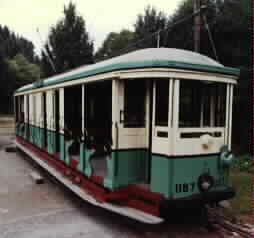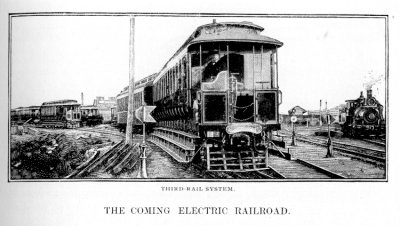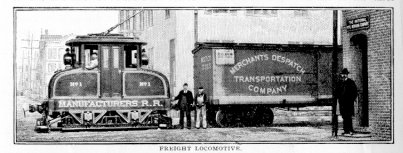A Trolley Museum
Today, we find a lovely old technology hiding in the forest. The University of Houston's College of Engineering presents this series about the machines that make our civilization run, and the people whose ingenuity created them.
The road twisted its way through the Oregon woods, far from any sign of human life. Suddenly, without warning, a big painted sign: Trolley Museum, with an arrow to the left. It clearly wasn't a civic museum, and a tourist money-maker would've praised the merits of its snake oil. Either one would've given 200 yards notice. This was something else. It was worth a look.
I screeched to a stop and backed up. My dozing wife snapped awake to wonder what this was all about. Then we saw it. A museum building amidst railroad barns, trolley tracks, and overhead wires. A group of hobbyists had found an abandoned logging rail center and used it to house their passion -- rebuilding old electric rolling stock.
These old gentlemen were celebrating a technology not too much older than they themselves. Effective city train systems began with San Francisco's cable cars in 1873. Central steam engines drove cables that the cars could grasp and release to start and stop. But cable cars flourished for only 20 years.
When Thomas Edison developed central electric power systems in 1882, electricity infected the public mind like a fever. It took only six years for electric trolley systems to spring up all over America. Cable cars lived out what life was left in them and then yielded to electric trolleys. By 1893 Oregon had created the first intercity electric trolley. You could ride from Portland to Oregon City. You could take a picnic lunch to Willamette Falls.
Trolleys gave way to buses after WW-II. I keenly felt the loss as the clean ozone smell of sparks was replaced with fumes and car-sickness. But now, in the quiet Oregon woods, it all came back to life.
We paid our $3.00 for a guided tour. A loquacious old driver threw switches and rang the bell. He told us more than we really needed to know about rattan seats on "Old Number 504," about the Blackpool Standard Omnibus, and about Australian Tram #1187. But that was all right. What he was really doing was giving voice to the nostalgia we all felt for this elegant old technology.
Perhaps it was more than nostalgia. For now these old machines are returning to our cities in new clothing. The New York subways and the Chicago "El" were versions that never did die out. And now most large cities are creating slick modern electric rail systems that are a delight to ride.
I'm John Lienhard, at the University of Houston, where we're interested in the way inventive minds work.
(Theme music)
Hayden, C., Official Guide to the Exhibition. How the Trolley Changed America. Oregon Electric Railway Historical Society TROLLEY MUSEUM, Star Route, Box 1328, Glenwood, OR 97210.

(Photo by John Lienhard)
"Old 1183"


America looks at a bright and promising new technology.
Photos from: Short, S. H., The Coming Electric Railroad. The Cosmopolitan, January, 1899, pp. 269-276.